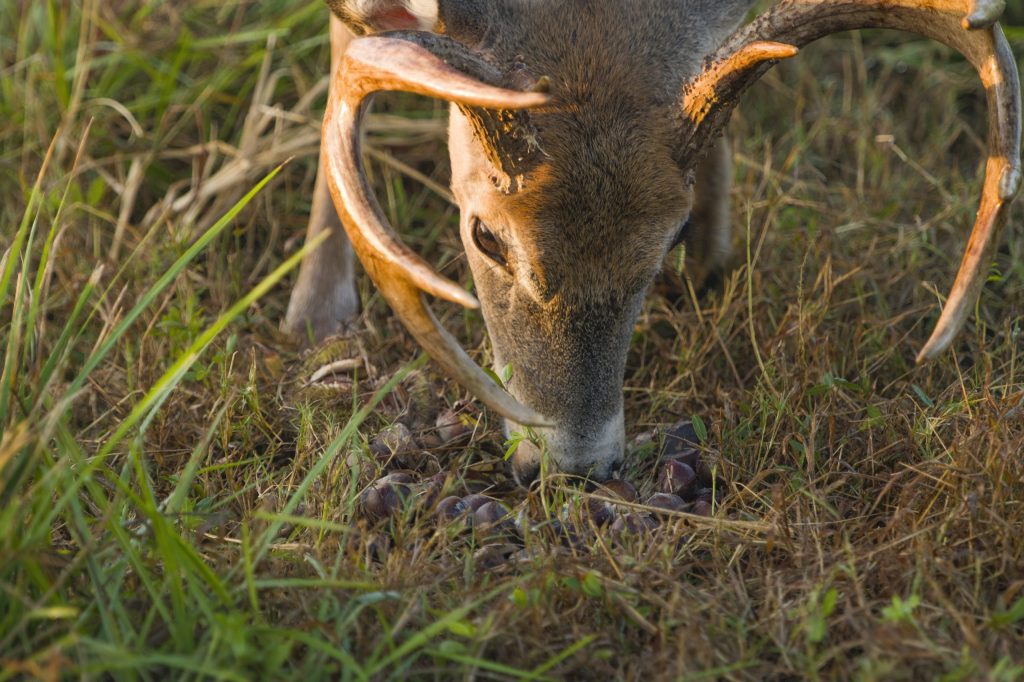How do you find a nice deer to hunt that other people don’t? We spoke with some experts and got their recommendations on planting food plots for deer in the woods.
Why and How to Create Easy Hidey-Holes Food Plots
“In the last few years on many properties where I’ve hunted, deer have become scarce in established food plots and most open-wood places. But I’ve found the best way to ensure that I have a place to hunt deer, and where my odds of seeing and taking deer are extremely high during the season, is to create hidey-holes,” said longtime deer researcher Dr. Grant Woods of Readsville, Missouri.
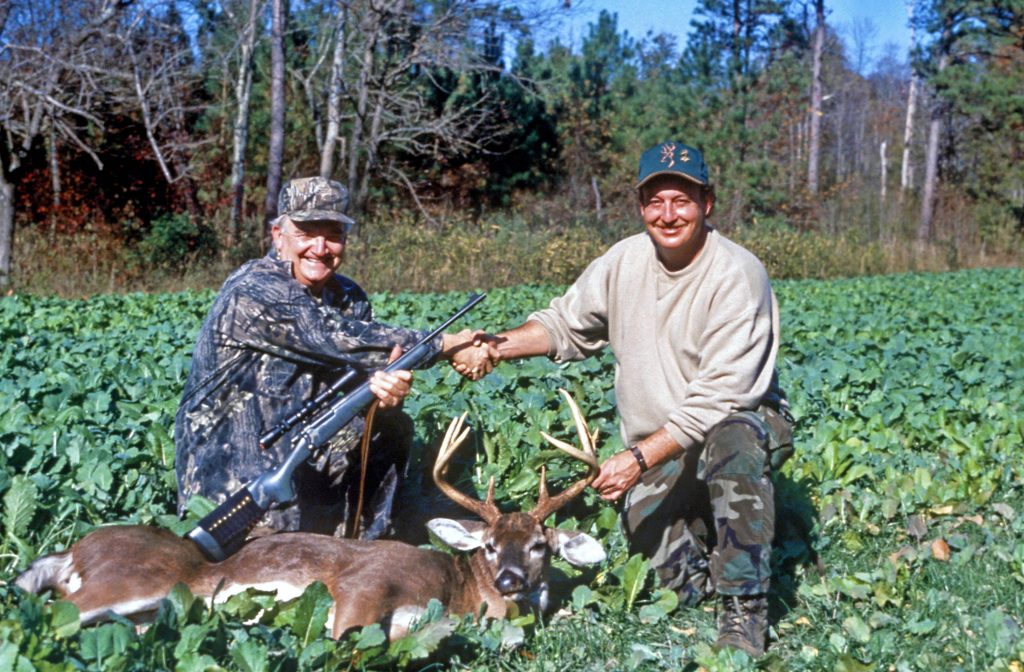
To make a food plot in the woods, you only need three items – a backpack leaf blower or a rake, seeds and fertilizer. Try and get as far away from a 4-wheeler trail or a food plot as you can, take a backpack leaf blower and four to five pounds of some type of seed that germinates really quickly with you.
“I use my backpack leaf blower to blow the leaves away in about a 20×20 circle or rake them away,” Woods explained. “I’m simply exposing the ground. I’ll search for a place where perhaps a tree has fallen down, or there’s some sunshine peering through the treetops deep in the woods. By yourself, you can carry a five-pound bag of seeds, a leaf blower and a 50-pound bag of fertilizer without much trouble to your destination. In about 45 minutes, I can blow all the leaves off the ground, spread the seed on the ground, spread the fertilizer and create some green forage for deer. Then when there’s nothing more for them to eat, the deer will be there.”

“People make two mistakes when they create hidey-holes like this. They hang their tree stands right on top of the hidey-hole, instead of putting up their tree stands 20 to 40 feet away. The second mistake hunters make is telling their buddies where they’ve planted their killer food plot, because their buddies more than likely will hunt them and scare the deer away,” Woods said.
Woods gives some advice on how you can constantly keep killer food plots to hunt throughout most of bow and gun season.
“Come down out of your tree after hunting in the morning, get your leaf blower, seed and fertilizer, go in and create a hidey-hole, and then return to camp and eat lunch. Don’t hunt that site for two to three weeks, so the deer will discover that little green patch and start feeding on it. Remember, this is a hunting spot, not a food plot. I try to create these green patches where my hunting buddies won’t find them. Food plots receive so much hunting pressure that these little hidey-holes are generally much-more productive for taking big bucks than food plots are.
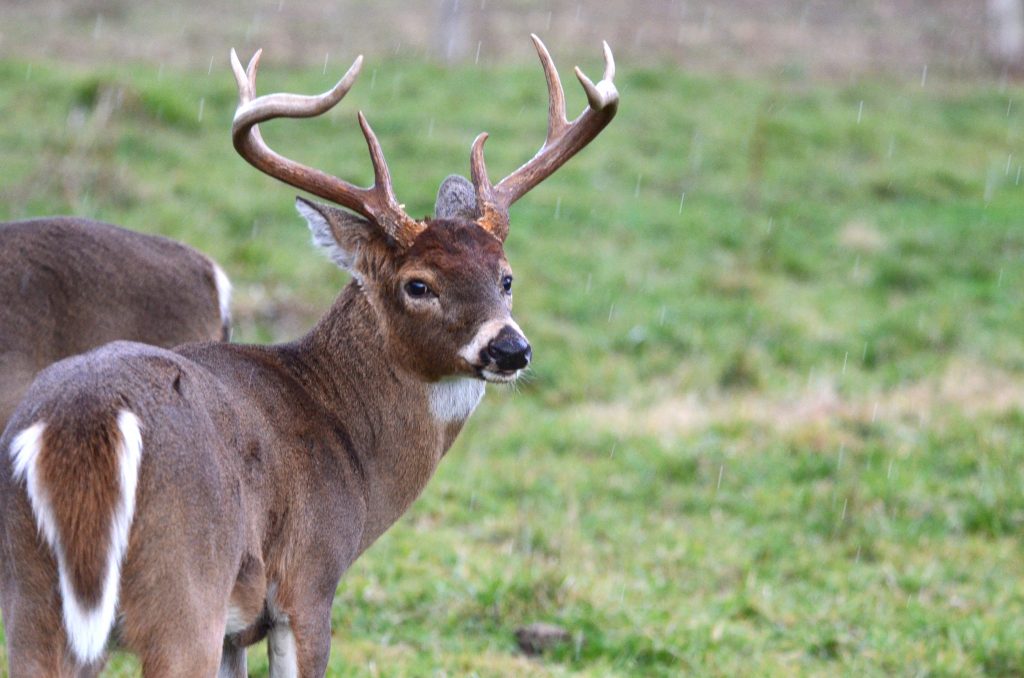
“I start making hidey-holes every Saturday, beginning in September. I continue to create them all the way to deer season. As long as the ground isn’t frozen, the seeds will germinate. I only hunt each hidey-hole about three times a season, not every weekend. Whether you blend your own seeds or use commercial seeds, you’ve only got about $25 worth of seed and fertilizer and about 45 minutes’ worth of sweat equity invested to create a killer food plot to take deer,” Woods said.
Other products you can use to make hunting spots are buckwheat, peas and other fast-germinating seeds. You can use this method for making hidey-holes until about two weeks away from a killing frost.
“Instead of spending so much time scouting, look for places where other hunters don’t hunt, and develop hidey-hole green patches in those spots. You’ll drastically increase your deer-hunting success. Even in just-thinned pine stands, you can create these types of food plots and be highly productive over them,” Woods noted.
UTV and ATV seed spreaders are another great way to spread seeds on your food plot. Read more about what you need to consider when choosing one and check out some of the best UTV/ATV spreader options n this article.
Planting Food Plots For Deer: What And When
One of the problems associated with hunting the same food plots every year is that the deer, especially bucks, learn to stay out of those food plots until after dark usually, except during the rut. If you’re wondering where bucks stay before entering the food plots at night, and where they can get snacks before moving to their beds in the mornings, you need to learn how, where and when you should be planting food plots for deer.
Often only about 1/4-acre in size, they’re referred to as honey holes, hidey holes or hot spots. These small food plots generally are 100-250 yards away from large green fields and often are planted where you’ve been baiting and have put up trail cameras before the season to census your deer herd.
Some of the most-productive small food plot for deer will be:
- In a pine plantation where a skip in planting trees has occurred, or a die-off of trees has created an opening in the middle of the thick cover;
- Near loading docks where logs have been loaded onto trailers after a timber harvest has taken place and created openings;
- On a ridgetop deer travel to reach a main food plot; and/or
- In an opening where your trail cameras have reported deer to have been traveling.
To learn a good deer food plot mix to plant now in these small food plots, “GDO” talked with David Brown, sales manager of Southern Seed & Feed, headquartered in Macon, Mississippi, with distribution of its wildlife feedings and seed blends products for deer in more than 150 stores under the Southern Buck brand.
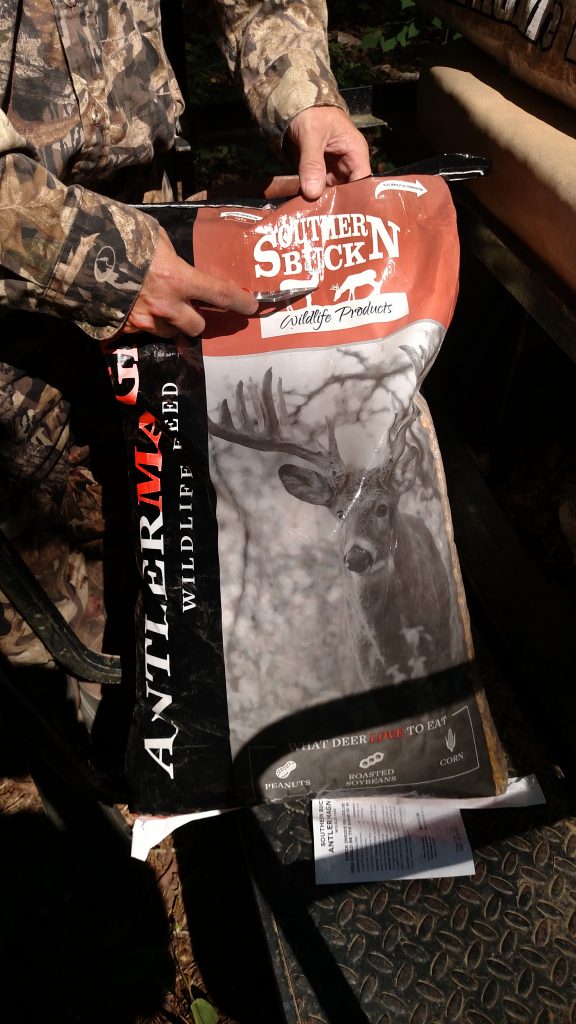
“Antler Magnet that contains roasted soybeans, corn and peanuts is in great demand by hunting clubs and landowners and has a much-higher protein content than just pouring corn out or feeding it to deer,” Brown reported. “Antler Magnet not only feeds deer but is an attractant too. As more landowners and hunting clubs have tried it, the demand has grown. product. You can put this product in a trough feeder, a spin feeder or pour it out on the ground. Since the bag weighs only 40 pounds, it’s light enough to carry in a backpack to create a small food plot.”
Because Alabama hunters now can put out bait to attract deer, they can use Antler Magnet when planting food plots for deer before the planted crop comes out of the ground.
Brown also says that Southern Buck has developed more, new wildlife plantings, including:
*Buck Magnet that’s designed for wet areas, although it works in various types of soil. Made up of a blend of wheat, forage oats, rye, berseem clover, appin turnips and balansa clover seeds that all grow well in wet areas, this seed blend is productive for early bow and early gun season.
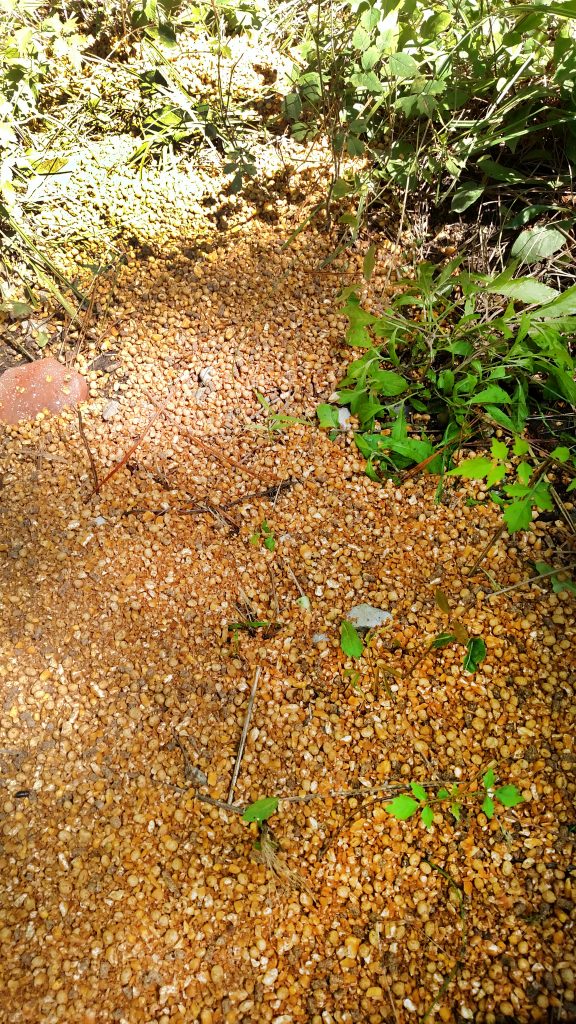
“It’s especially effective when planted in harvest spots in the woods away from your main green fields to provide food for deer to snack on before dark when they move into bigger green fields,” Brown said. ”The seed blend grows best when you turn the ground but it also fairs well if you scratch-up the ground with a rake to plant. It produces well in shady areas, swampy places and creek bottoms but not where there’s standing water or that may have standing water.”
Protein-rich Antler Magnet contains corn, soybeans and roasted peanuts to not only attract deer but also provide them with good nutrition close to or right beside where you plant a small green field.
* Rack Zone seed blend produces well from early deer season throughout deer season and beyond and generally will do best in green field sites already established.
“The landowner will get about 10 months of grazing out of this product that contains crimson clover, balansa clover, arrowleaf clover, forage oats, rye, berseem clover, wheat, appin turnips and Austrian winter peas,” Brown explained. “Rack Zone needs plenty of sun and drier land and is a good planting for early season when the bucks are developing antlers, and the fawns are growing.”
* Super Buck has been used successfully by landowners for several years on large green fields and includes wheat, forage oats, Austrian winter peas, trophy rape, balansa clover, crimson clover, daikon radishes and turnips.
Katie Koehn, whose father, Roger Koehn, started Southern Seed & Feed in 1983, tells of her dad’s interest in farming and providing feed for various livestock and eventually feed for wildlife.

“One of the reasons our wildlife plantings have been so successful is due to all the seeds being coated with Delta Ag seed coat, a powdery substance that coats the seeds, enhances emergence and helps in stand establishment, whether planting in dry or wet soil,” Koehn said. “The Southern Buck products are scientifically formulated to promote antler growth and herd health.”
When you plant small green fields, either on wet or dry ground, you’ll have a place to take bucks in the early season and throughout the season where the bucks will stop off to snack before moving into the large green fields at night.
“By going to our website, you can learn about the many products offered that you can buy at stores primarily located in Mississippi and Alabama. Too, the wheat in our plantings is all grown locally to insure that we have a variety of wheat to add to our deer food plot seed blends that grows well in the South,” she said. “If you start attracting deer and planting food plots for deer now, you’ll drastically increase your odds of taking one or more bucks this upcoming season.”
Why Plant a Smorgasbord of Food for Deer
Dr. Woods mentions that no magic crop exists that meets all his requirements when planting food plot for deer in the woods: production, palatability, digestibility and nutrition. So, he suggests that you choose plants that will mature and become palatable to deer at different times. Rotate your crops just like a farmer does to provide more of what a deer needs in its food and food that’s available year-round.
Another Simple Way to Create a Small Food Plot
If you fertilize naturally-occurring plants and trees, deer will select those plants to feed on much more readily,” says Dr. Keith Causey, retired wildlife professor from Auburn University, “For instance, if you fertilize one end of a large patch of Japanese honeysuckle or blackberries, deer will come to the fertilized patch.”
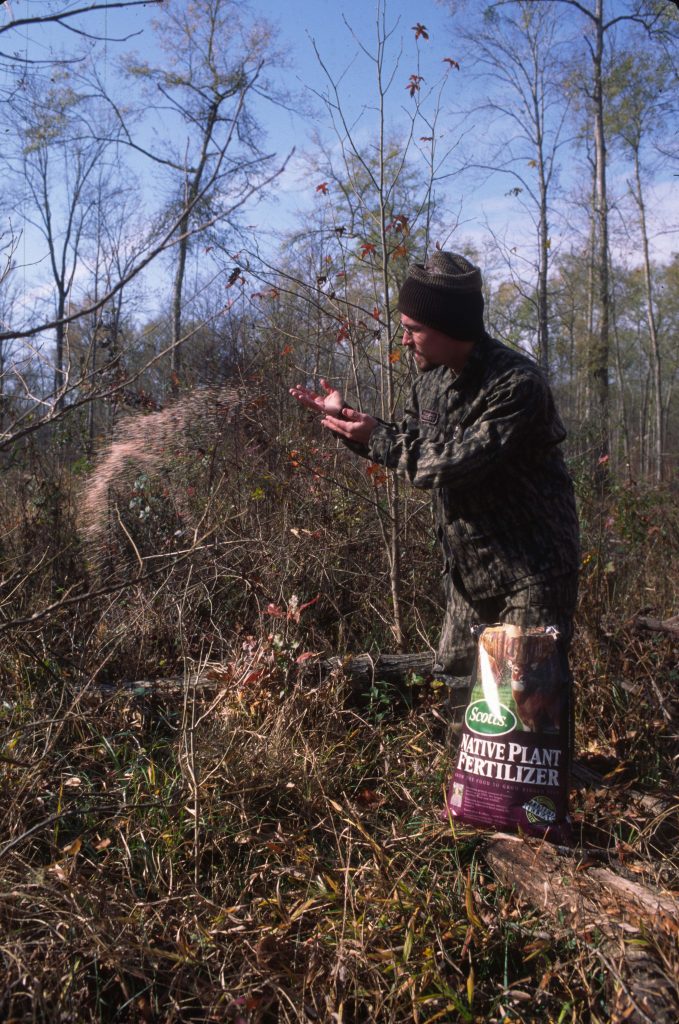
Identify foods deer enjoy, and fertilize them. For instance in the South, during early hunting season, deer often feed on poke sallet, which usually lasts for the first week or two of hunting season. Deer may favor greenbrier (smilax) next, honeysuckle, blackberries, sumac, wild plums, persimmons, pecans and acorns, to name a few. These fertilized naturally-occurring plants will attract deer to your killer food plots.
Planting Food Plots for Deer: Forage For Years To Come
To provide wildlife food all year for both deer and turkeys on your property, circle your food plots in the woods and elsewhere, whether they’re small or large, with trees, shrubs and pollinators as in flowers and blooms that attract bees. These plantings will produce the ultimate food plot where chestnut trees and other nut trees, fruit trees, shrubs and vines are planted around the edges of a green field, offering additional year-round sources of deer and turkey food. Planting these foods for wildlife will direct your deer herd to places where there’s food for those deer. Although fruit and nut trees produce best in full sun, you’ll still get plenty of nuts from your trees grown in the woods.
A company that has specialized since the 1980s in producing chestnut trees, known as the Dunstan chestnut, is Chestnut Hill Nursery, also called Chestnut Hills Outdoors in Alachua, Florida. The Dunstan chestnuts grow quickly, are disease resistant and will yield high-quality, large, sweet-tasting nuts quickly that are easily peelable by deer and turkeys.
“My great-grandfather, Dr. Robert Dunstan, was a plant breeder, who grafted the budwood of an American chestnut to Chinese varieties of chestnuts and produced several breedings. He’d received the budwood from James Carpentar of Salem, Ohio, a member of the Northern Nut Growers Association. Carpentar had discovered this one living American chestnut in the 1950s in a grove of dead and dying chestnut trees. Millions of acres of American chestnut trees had died between 1904 and 1944, due to the accidental introduction of a bark fungus from the Orient.
“After Carpentar inoculated this tree with active blight spores, this tree still remained free of infection. Carpentar then shipped the tree to my great grandfather, who crossbred the tree. In 1962, the seedling trees began to bear fruit, and today are more than 50-feet tall. Our company became invested in helping the chestnut tree be re-established in the U.S and has shipped millions of these Dunstan chestnuts all across the nation,” says Chestnut Hill president Iain Wallace.
The Dunstan Chestnut trees produces nuts within three to five years in USDA Zones 5-9, with the more-northern zones’ trees growing slower due to colder weather. Chestnut Hills recommends chestnut trees on the edges of your green fields when you are planting food plots for deer.
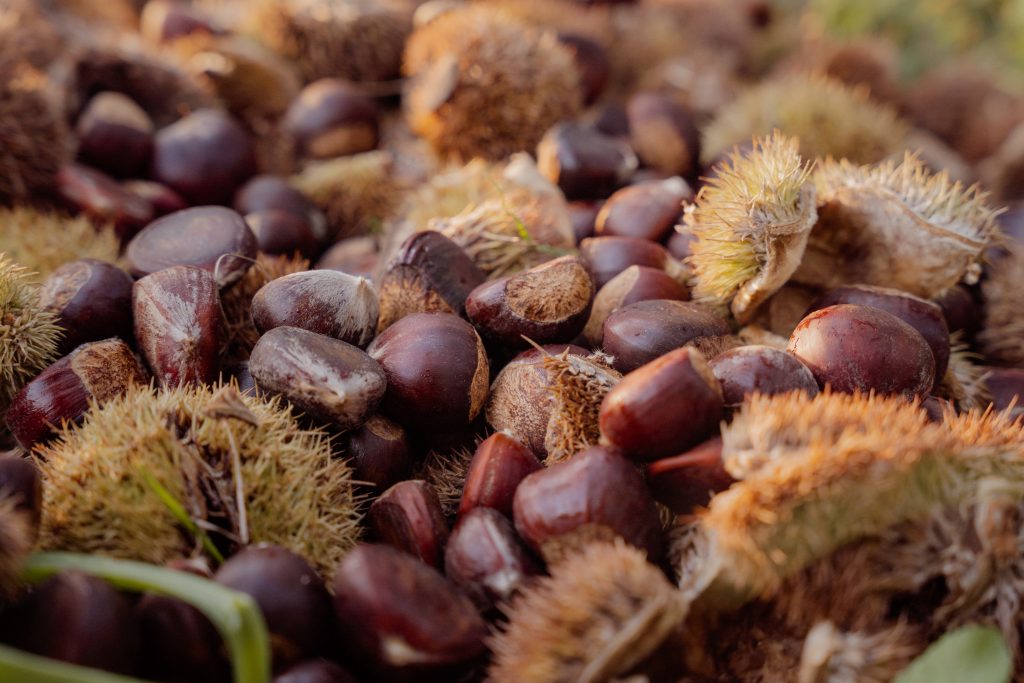
“The more chestnut trees you have in one area, placed 30-40 feet apart, the more pollinators, like bees and insects, that will be attracted to the trees. By planting the chestnut trees using this formula, the pollinators can gather more pollen and help the chestnut trees produce nuts more quickly,” Wallace reported.
The company also offers fruit tree plantings that are high-carbohydrate food sources, like persimmon, pear, plum and apple, as well as blackberry, blueberry and raspberry vines and mulberry bushes. When your green field isn’t out of the ground yet to produce green foliage for your deer, the deer will browse and feed on this soft mast.
Wallace explains that, “Mulberries are a deer magnet in the summer, with apples, persimmons and pears preferred foods in the fall. The Morris Bertram is a persimmon that drops its fruit early in time for bowhunting season. We also like the Kaki, an oriental persimmon that drops fruit in the fall, and the Deer Magnet, an American persimmon that drops fruit later from November and early December.” Wallace explained.
“The deer also will need hard mast food when these food sources are gone, like acorns and chestnuts. The Dunstan chestnuts start dropping during the first week of August in the Deep South, and throughout September to November further north. However, the growth of all these foods is based on how much rain the plantings have received, whether a drought has occurred in a region, and how early winter starts there.”
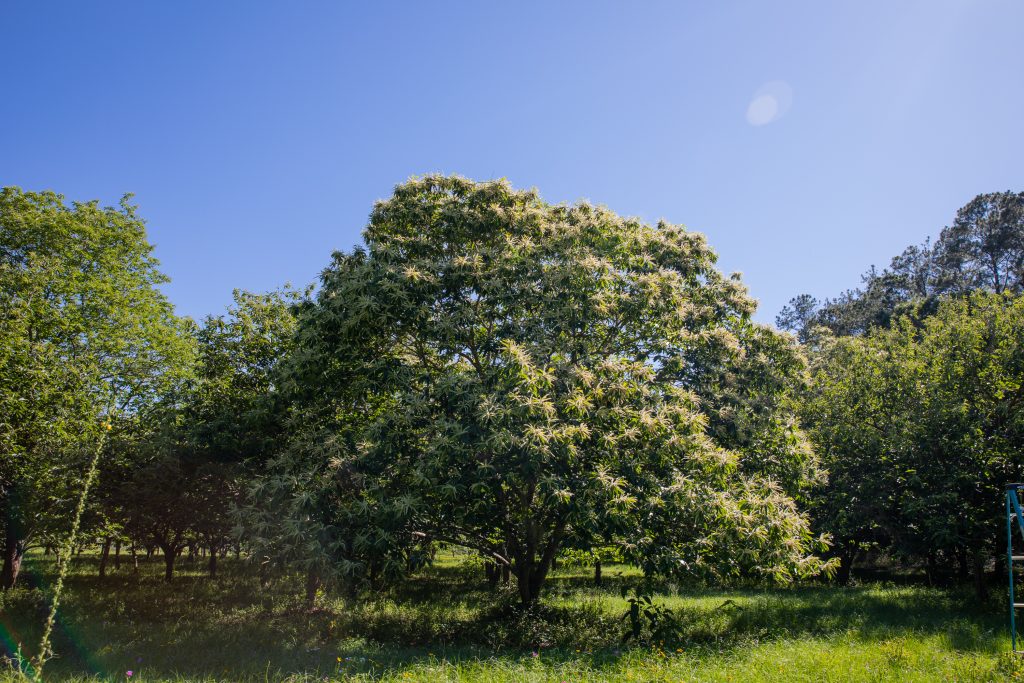
“Chestnut Hill sells one year-old seedling-size Dunstan chestnut trees through mail order, as well as two- to three-year-old trees in three-to-seven-gallon pots. A landowner who purchases a two- to three-year-old Dunstan chestnut can expect to see nuts on the tree within two years of planting. A flowering chestnut tree signifies that it’s close to producing nuts. The more chestnuts you plant on the edges of your green fields, the more pollination of the trees, and that will increase the yield of nuts” Wallace said.
Visit Chestnut Hill Outdoors, to see the catalog. You also can call the company’s team of specialists at 1-855-386-7826 to learn more about what trees and shrubs to plant in a specific area to increase wildlife numbers on your green fields. Check out https://chestnuthilloutdoors.com/find-a-store/ that updates regularly to let you know about where you can buy Dunstan chestnut trees across the eastern U.S. Write chestnuthilloutdoors@gmail.com for more information.
Today John has about 100 books available on Amazon in Kindle, print and Audible versions, and you can find those at this link www.amazon.com/author/johnephillips.

